One of the reasons that some businesses aren’t quite sure about going to a completely cloud-based workflow is due to their worry about cybersecurity.
They feel that keeping everything onsite with servers and an on-premises network can ensure their files stay in their own building safe and secure.
But is on-premises truly safer than a cloud environment?
Cloud business solutions have become fairly indispensable, especially more so in a post-COVID impact world. Companies need to have the flexibility to access workflows and data from anywhere.
However, for many companies this brings the dilemma of whether or not to trust the reliability and security of cloud solutions.
On one hand, they need to ensure business continuity in the face of a crisis or disaster that impacts their ability to access on-premises assets. On the other, they’re not sure exactly how secure trusting all their data to the cloud might be.
Facts About On-Premises vs Cloud Security
One of the resources that we’ve studied to look at cloud vs onsite security is the Verizon 2020 Data Breach Investigations Report (DBIR), which covers 3,950 breaches and 157,525 cybersecurity incidents throughout 81 countries.
Following, are some of the facts related to the security of your data according to where you choose to keep it, on-premises vs cloud. The results may surprise you!
The Cloud Sees Fewer Data Breaches than On-Premises
According the DBIR, cloud assets were breached in 24% of total data breaches in 2019, while on-premises assets accounted for 70% of the data breaches.
This illustrates that there is a much bigger risk when keeping your data and work processes onsite than there is with entrusting them to a cloud service.
Reasons for this include:
- On-premises devices may not be updated regularly with security patches
- Those with on-premises workflows may not be using adequate cybersecurity
- On-premises equipment may not have a qualified person administering the equipment if companies are handling their IT in-house.
Cloud Security Problems are Largely Due to Human Error
Of those data breaches that do happen to cloud systems, a large portion are due to user error. Misconfiguration has jumped to the #2 cause of data breaches, just behind hacking.
If a system administrator doesn’t properly secure a cloud platform or enact simple safety protocols like multi-factor authentication (MFA), cloud data can be at risk, but not through any fault of the cloud service itself.
A full 77% of the reported cloud breaches were due to login credentials being breached, which is something that can be fixed through use of MFA.
According to Microsoft, MFA stops 99.9% of compromised account attempts.
On-Premises Assets are at Risk in a Disaster
An obvious risk when companies keep their workflows and data on-premises is that if there is any type of manmade or natural disaster, a fire, flood, or severe storm, they could end up losing both their equipment and their data.
Cloud service providers put redundancies in place, which means your data is available from another cloud server should a main server have an issue. This is one of the ways that many cloud providers can offer a 99.9% uptime guarantee.
Additional Physical Security in Cloud Data Centers
Most small businesses in Thames Valley, or anywhere else in the world, can’t afford to have 24/7 security guards and monitored camera systems around their office and on-premises server and other IT equipment.
Should a break-in occur their equipment and all their data could be stolen, leading not only to a major costly data breach, but also the costs of rebuilding their entire digital environment.
Cloud service providers like Microsoft and Google, have 24/7 security at the data centers where client data is being stored. This includes physical security guards, biometric locks, and extensive surveillance systems.
Newer Server Technology – Ongoing Updates
Another difference in the potential security of a cloud-hosted account versus using on-premises server is that large cloud providers keep their facilities updated with the latest technology, both to help security and reduce their costs.
This includes having planned server lifecycles and updating equipment well before it has a chance of failing.
When a small or mid-sized business is purchasing a server for their office, they’re looking to get as long of a lifespan as possible out of it due to the investment cost. This may cause them to hang onto the server longer than they should and leave them at risk of a data breach.
Having Offline Access to Your Data
One reason that companies use on-premises servers is because they want to have access to their data anytime, even if there may be an internet outage.
You do need to have internet access to use cloud services, however there are ways that you can have offline access through cloud data backup services that can store your cloud data on a physical onsite disk, just in case.
Get Help Migrating to a Safer Cloud Environment
Don’t leave your data and business at risk by keeping your processes onsite. NMX IT Solutions can help your Thames Valley area business upgrade to a more productive and safer cloud environment.
Contact us today to schedule your consultation! Call 01628 232300 or reach out online.
